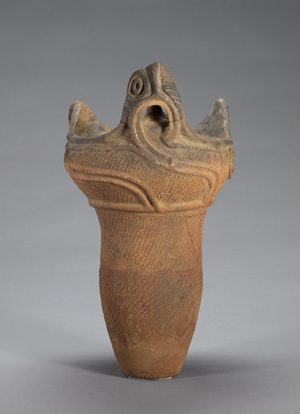Museum launches cross-disciplinary initiative
By Daniel Aloi

The Herbert F. Johnson Museum of Art is creating a series of collection-based courses, to be co-taught by museum curators and educators with Cornell faculty members, intended to engage students and new faculty from several different disciplines.
The museum’s “Connecting Research with Practice” initiative is funded by a four-year, $250,000 Andrew W. Mellon Foundation grant supporting course development, hiring a new curatorial coordinator for academic programs, and providing faculty curriculum development grants and student internships.
“This pilot program is a good way to build on what is already in place,” said Stephanie Wiles, the museum’s Richard J. Schwartz Director. “We had 185 class visits during the fall 2012 semester and 127 during the spring 2013 semester. As we identify faculty who are enthusiastic about working with the museum and its collections, we are now in a position to provide more in-depth collaborations to develop semesterlong courses.”
The first course, “From Excavation to Exhibition,” will be offered this fall, in partnership with the Cornell Institute of Archaeology and Material Studies. Co-taught by chief curator and curator of Asian art Ellen Avril and professor of anthropology Adam Smith, the class will examine the paths objects take from recovery at archaeological sites to their appearance in museum exhibitions, using items from Cornell’s classical collections and the Johnson Museum’s Asian and pre-Columbian archaeological material, Avril noted.
“Archaeologists and curators have always been part of the same project: teaching the world about the richness of the human past,” Smith said. “But we have often been divided by our methodologies and theoretical interests. My hope is that the class can reassert the shared project that unites archaeologists, art historians, conservators and curators.”

The new courses will draw on Cornell curricula and resources – including advanced microscopy at the Center for Materials Research, the Wiener Dendrochronology Laboratory and the Cornell High Energy Synchrotron Source (CHESS) – and involve guest experts.
“Ellen and Adam are working with specialists to develop a syllabus for the class,” Wiles said. “When the course is taught, they bring the same scholars back to teach a session of the class and give a public lecture – something that connects with this course, giving the public a window to what the students are learning.”
Other planned courses include “Seeing Art Through Science,” a technical art history course in partnership with art, science and engineering departments. It is structured around the physicality of objects and materials and scientific study of artworks – for example, using X-ray fluorescence and pigment analysis to “see” underlying layers of paintings. Instructors will include CHESS research associate Arthur Woll, museum curator Andrew Weislogel and engineering professor C. Richard Johnson Jr.
“The museum’s staff has teamed with faculty to teach semesterlong courses in the past, mainly with professors from the history of art and visual studies and the College of Architecture, Art and Planning, and those have provided rich educational experiences for students,” Avril said. “What is most exciting about this grant is that it supports innovation to conceive course topics that engage students and faculty across a broader range of disciplines and diverse intellectual approaches.”
Media Contact
Get Cornell news delivered right to your inbox.
Subscribe